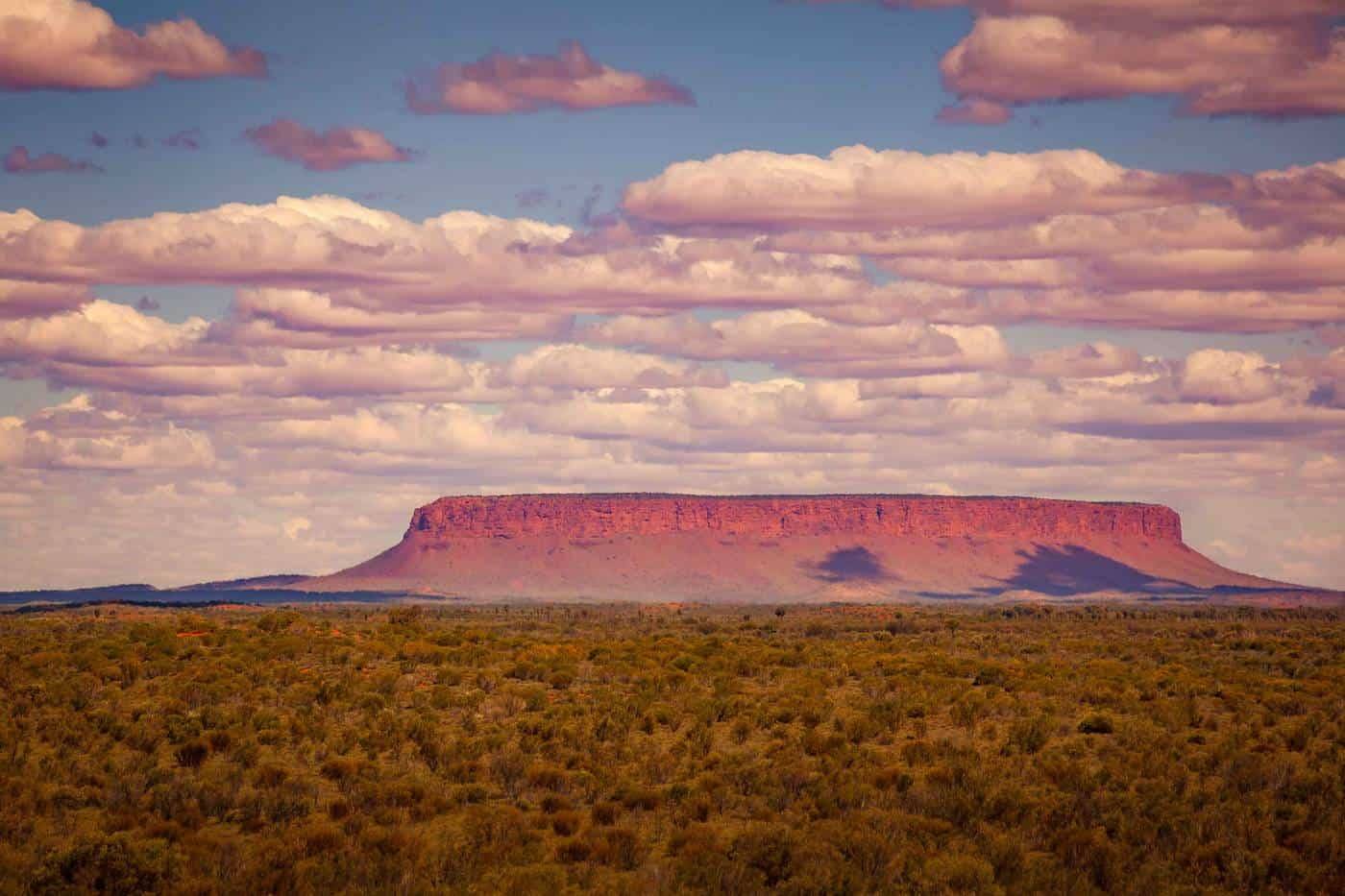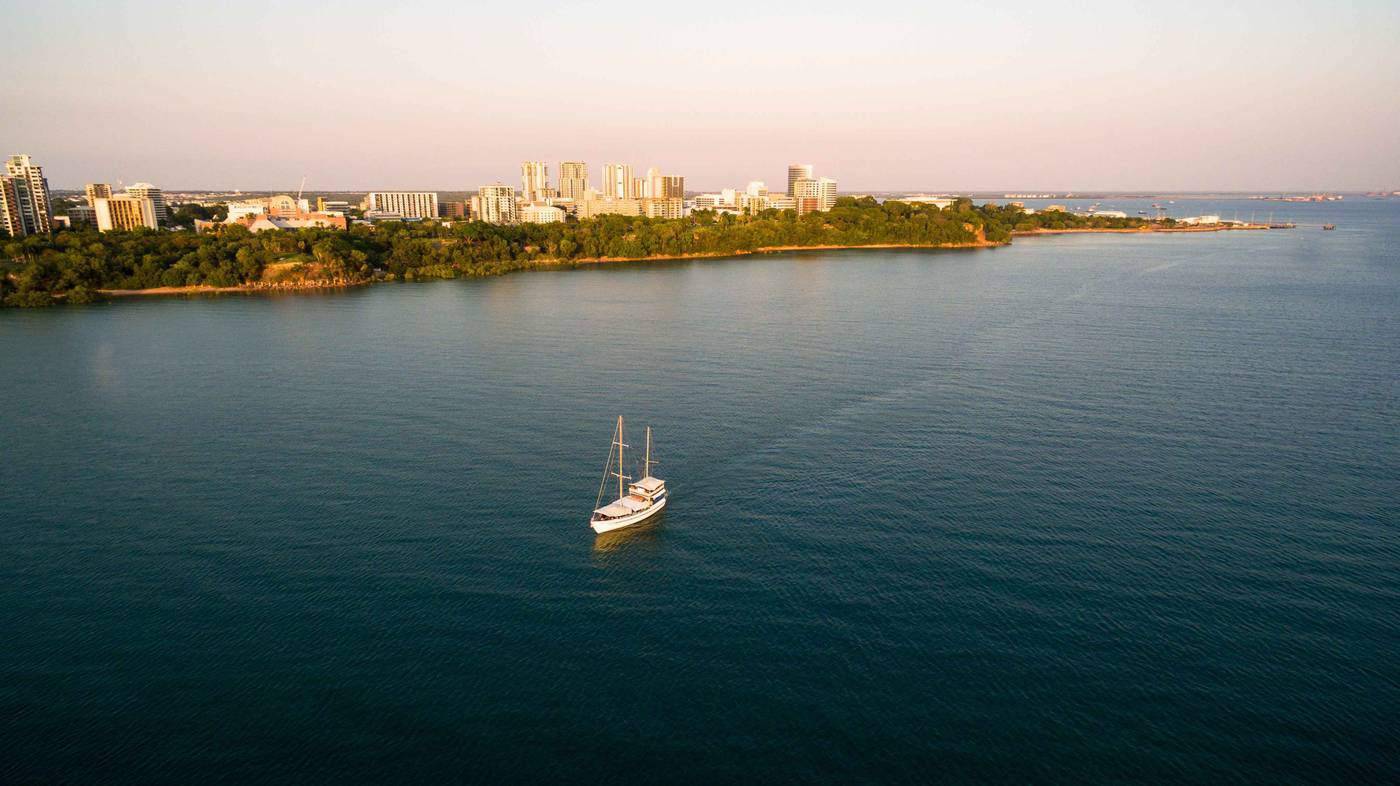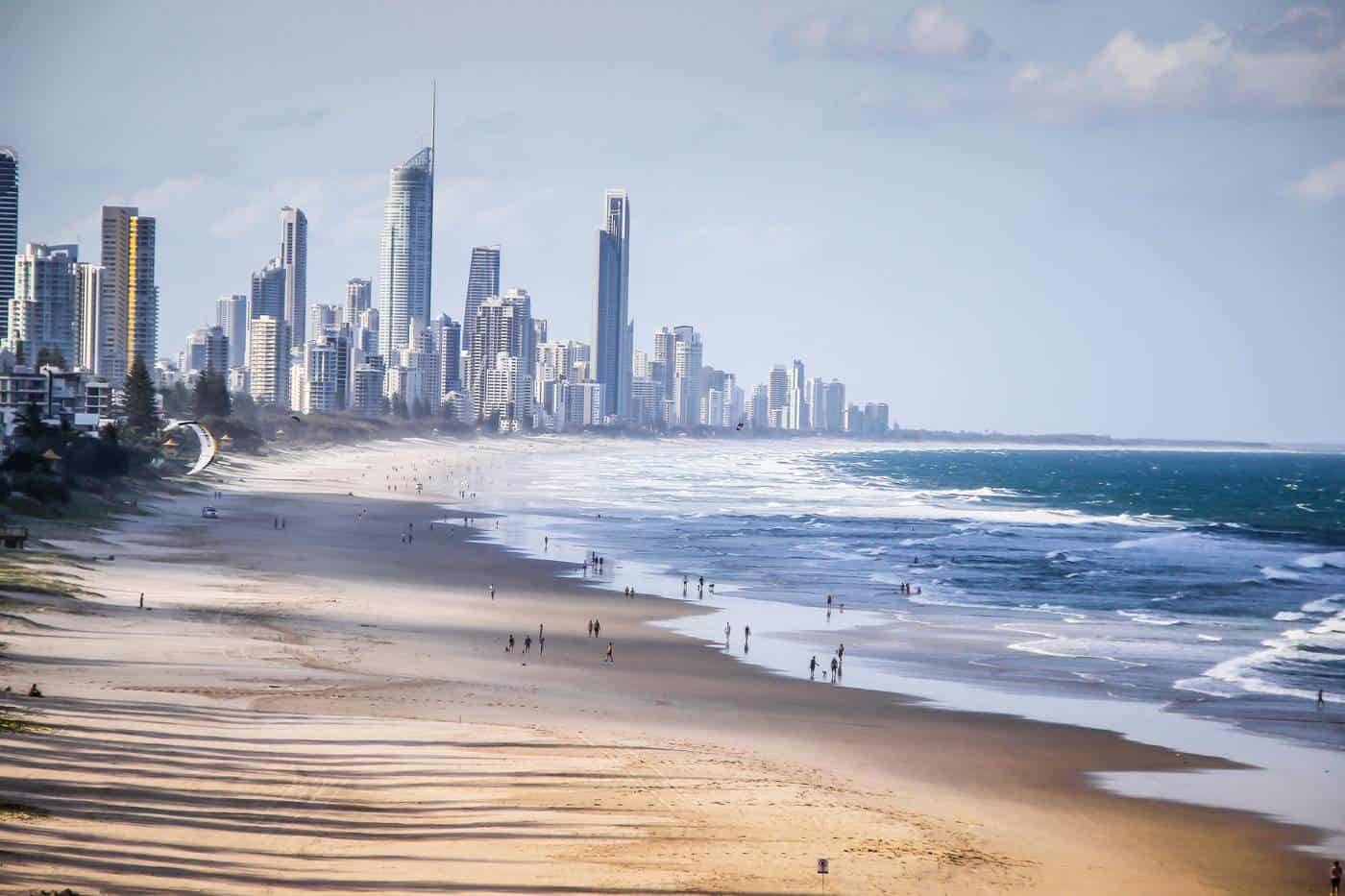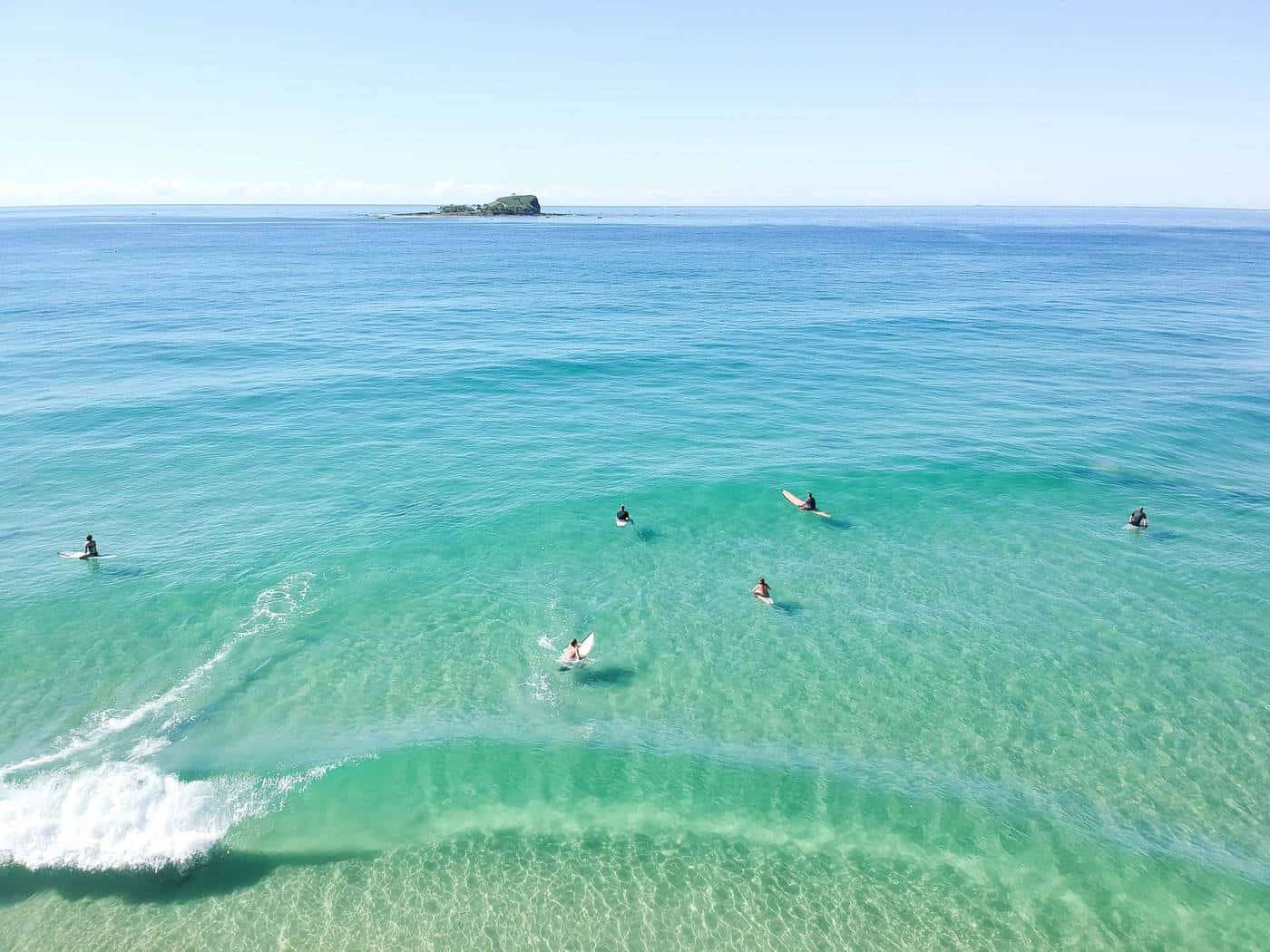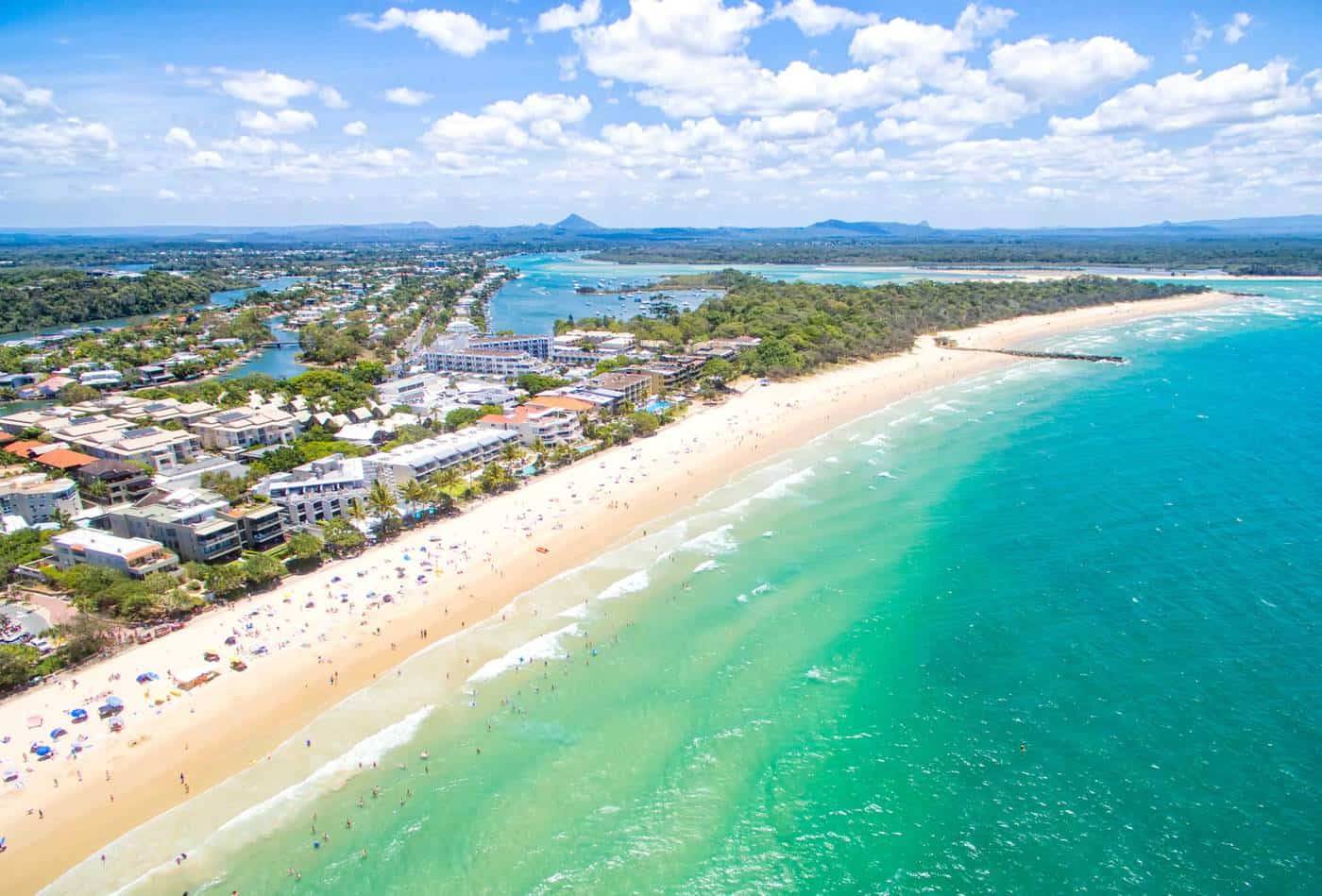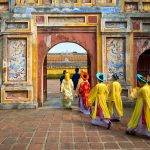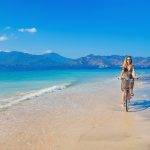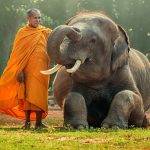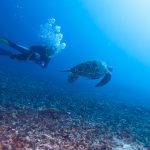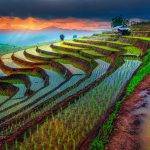
THE TOP END
The northern portion of Australia, known as the Top End, is predominantly wetland and extends from Darwin to the Litchfield, Kakadu National Park and Arnhem Land. In the territory such abundant in wildlife the climate plays an integral part in the make-up of this area as it must support an enormous animal population.
The tropical savanna climate brings monsoonal rains and storms and extreme humidity during the wet season. And that is all the native habitats need to prosper, especially the king of the domain – crocodile.

LITCHFIELD NATIONAL PARK
One hundred kilometres south-west of Darwin, there is a small town of Batchelor – the entrance to the Litchfield National Park. The reserve has been home to the indigenous people for thousands of years, and still today it has a great significance for their culture.
The park attracts visitors with its picturesque tropical setting, gorgeous waterfalls and swimming holes at their base. The most popular are surely the Wangi Falls with lovely picnic areas, nice walking trails and generally safe swimming.
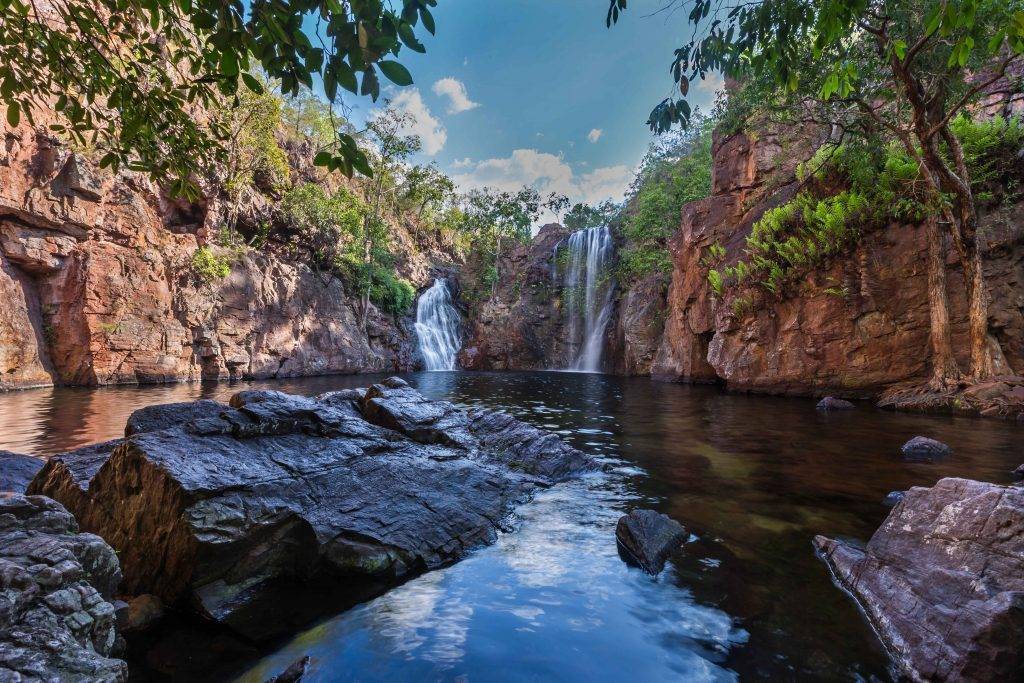
ESSENTIAL EXPERIENCES IN LITCHFIELD NATIONAL PARK
- Wangi Falls – the favourite waterfall in the park with great walking trails
- Tjeataba Falls – sacred Aboriginal site (swimming not permitted)
- Florence Falls – safe swimming and walking tracks
- Tolmer Falls – spectacular cascading waterfall, deep rock pool, colonies of bats
- Surprise Creek Falls – very good and safe swimming
- Bulley Rockhole – cascading plunge pools
- Bamboo Creek – old tin mine, educational walking trail
- Adelaide River – the famous Jumping Crocodile Cruise not to be missed!
- Raymond River Track – 4WD only
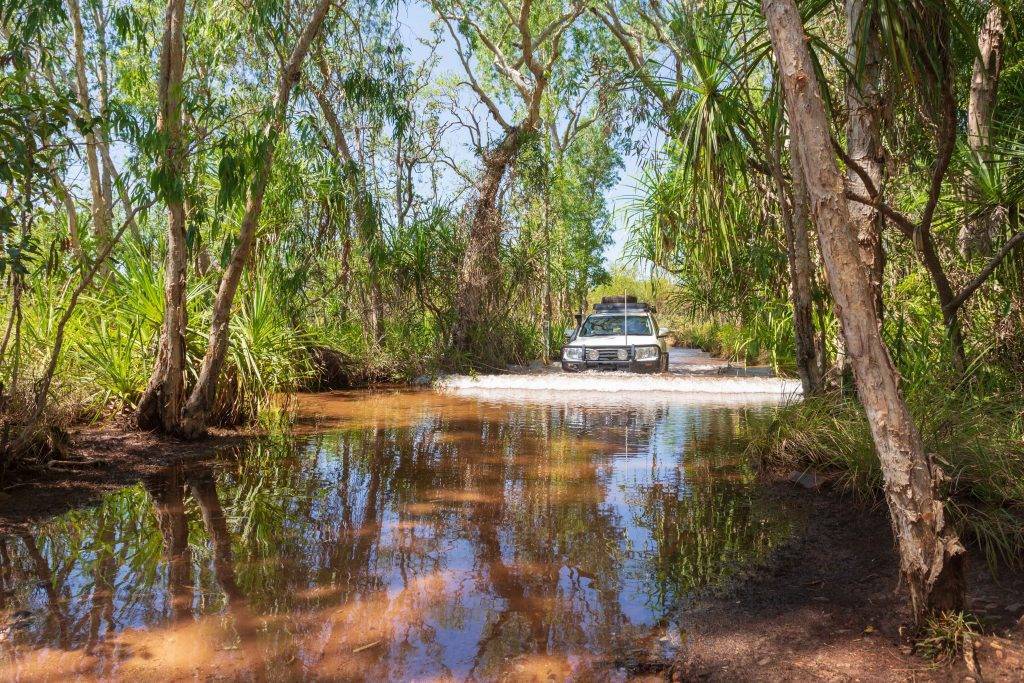
KAKADU NATIONAL PARK
The UNESCO lists Kakadu National Park is the largest national park in Australia, and it stretches over more than 20 000 square kilometres, including the whole South Alligator River – home to a large crocodile population and various other habitats, such as heathland, eucalyptus woods and rainforest.
This wetland region is crisscrossed with rivers, swamps and billabongs that accommodate two different species of the scaly reptiles: Johnson crocodiles (Freshies) which live in freshwater and mostly feed on fish, and the Estuarine crocodiles (Salties) that became notorious for killing the occasional, careless tourists. These up to 6 metre-long monsters are the largest reptiles in the world and live in both fresh and salty waters.
The park also makes a sanctuary for a huge range of insects, butterflies, freshwater fish, kangaroos, wallabies, dingoes and water buffalo.
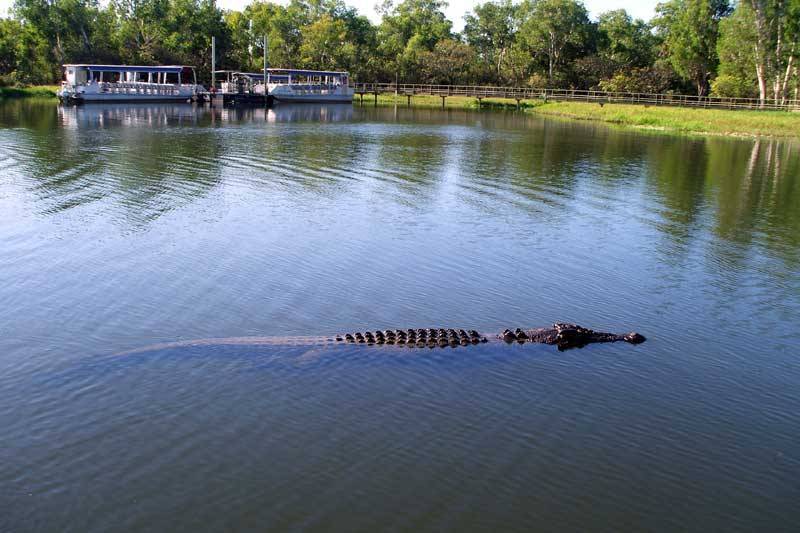
Paradoxically, Kakadu boasts tropical waterfalls and plunge pools that are actually safe for swimming; it important, however, to know where to go! For instance, Maguk and Gunlom are the two most favourite among the locals. Borth spots are situated quite high above the sea level and not easily accessible to the crocodiles.
However, you will need a good four-wheel-drive (in many cases with a snorkel) to get to most of the points of interest in the park.
BEST WATERFALLS FOR SAFE SWIMMING IN KAKADU NP:
- Gunlom Falls
- Maguk Falls
- Barramundi Falls

Kakadu National Park is not only a haven for naturalists but also archaeologists. Kakadu conservation area is a territory of great historical significance. There are more than 5000 ancient sites of Aboriginal rock art from many different eras.
Evidence showed that human occupation of this area had spanned at least 40 000 years, which is thousands of years longer than the civilisations such as those suggested by the Egyptian pyramids, the Roman roads, the Great Wall of China or Stonehenge.
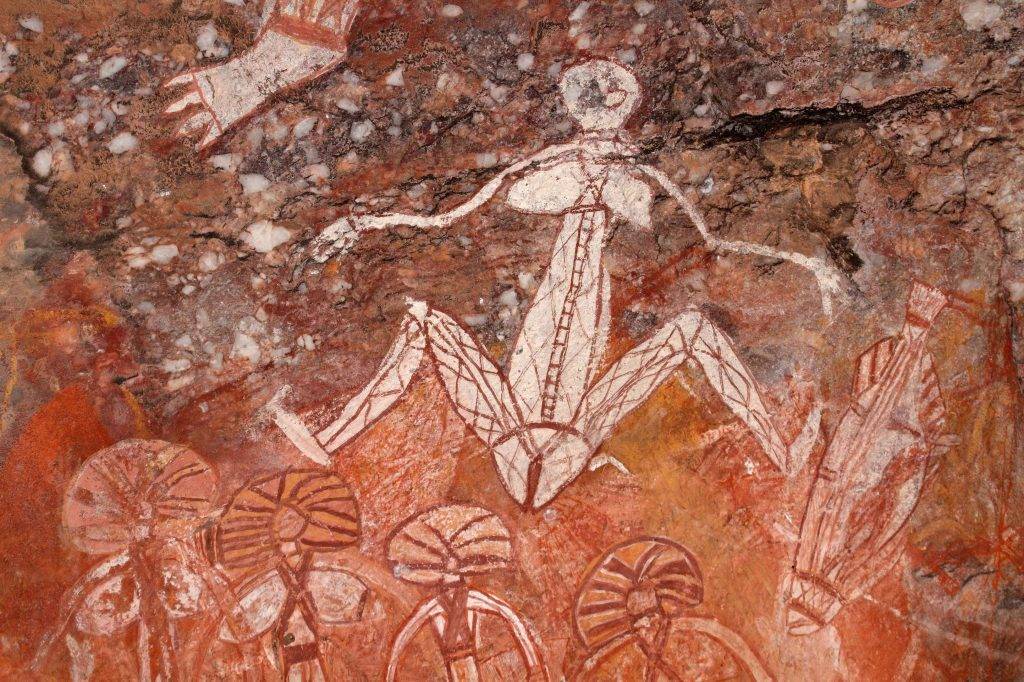
The Kakadu National Park consists of the following zones: South Alligator Area, Jabiru Area, East Alligator Area, Nourlangie Area, Jim Jim Falls Area, Yellow Water Area and Mary River Area.
ESSENTIAL EXPERIENCES IN KAKADU NATIONAL PARK
- HUMPTY DOO – pop in the town`s tavern for a beer to feel the atmosphere of a classic Australian regional town
- WINDOW ON THE WETLANDS/BEATRICE HILL – every visitor heading to Kakadu will want to stop at the Beatrice Hill information centre and take a look at the region`s characteristic wetlands full of abundant wildlife
- SOUTH ALLIGATOR AREA – take a 3 km walk around Mamukala Wetlands/BBQ area
- JABIRU AREA – definitely go the Bowali Visitor Centre to learn more about the reserve
- EAST ALLIGATOR AREA – Ubirr Rock Galleries and Lookout is a 1-kilometre loop track that will take you through the breathtaking scenery of the sacred Aboriginal historical site
- NOURLANGIE AREA – Nourlangie Rock is an outstanding Aboriginal site with famous rock art/X-ray figures
- JIM JIM FALLS AREA – Jim Jim Falls is the most spectacular waterfalls in the whole region with a pretty picnic and various walking tracks, popular scenic flights (available in the dry season only, access by 4WD), Twin Falls are accessible only with snorkel/high clearance
- YELLOW WATER AREA – one of the main attractions of Kakadu is booking a cruise to the Yellow Water Wetlands to admire its wilderness – the highlight: saltwater crocodiles. In the dry season there are nice boardwalk tracks over the floodplains accessible, e.g. Mardugam Billabong and Gungardun Walk
- MARY RIVER AREA – for many visitors this would likely be the very favourite part of Kakadu with major attractions – Maguk Gorge, Barramundi Gorge and Gunlom Falls. All three sites present spectacular views, stunning waterfalls, crystal-clear plunge pools and gorgeous walks such as Gungurul, Bukbukluk and Yurmikmik

NOTE
Kakadu National Park is about 3 hours drive from Darwin and access to most of its attractions requires 4WD.
It is essential to keep to the marked tracks when walking in Kakadu NP as the crocodiles live everywhere around. There are several records for fatal crocodile attacks in the region every year. Remember that even if you cannot see the crocs, they can see you.
Litchfield National Park can be reached within 1.5 hr from Darwin by a vehicle, and it is 2WD accessible. Stop by in Batchelor first to ask for updates and more information at the local visitor centre.
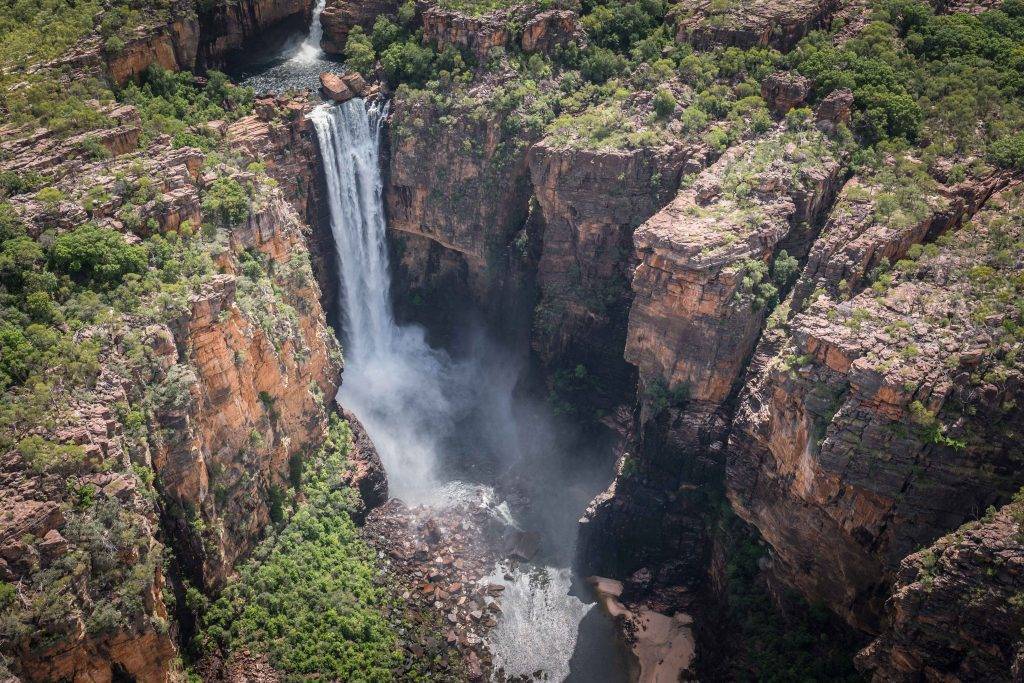
ARNHEM LAND
The northernmost tip of the Northern Territory is occupied by the sacred Arnhem Land that has been home to the Aboriginal Yolngu people since millennia. The region is a deeply spiritual place with great archaeological significance and indigenous artistic legacy. This is where the national music instrument originally comes from – didgeridoo.
Extending along the Arafura Sea, not far away from Papua New Guinea, Arnhem Land is one of the least accessible regions of Australia. One can find truly unspoiled wilderness – vast savannah woodland and wetland filled with native fauna and flora, but also pristine offshore islands.

ESSENTIAL EXPERIENCES IN ARNHEM LAND
- Wongalara Sanctuary – book a tour to the monsoon rainforest and wetland to meet the threatened species of Australia, including the freshwater crocodile
- Gabarnmung – take a helicopter ride to visit the remote Jawoyn people and find out more about the mysterious Nawarla Gabarnmung ‘rock shelter’ and the local Stone Age art
- Gunbalanya/Oenpelli – let the local artists take you back to the past Dreamtime and hear their ancient stories, myths and legends
- Nanydjaka/Cape Arnhem – a perfect place with azure waters for diving and snorkelling
- Cobourg Peninsula – visit the wonderful marine park on the remote peninsula and meet the large flocks of migratory birds
- CAHILLS CROSSING – the starting point to the Arnhem Land and an attraction itself
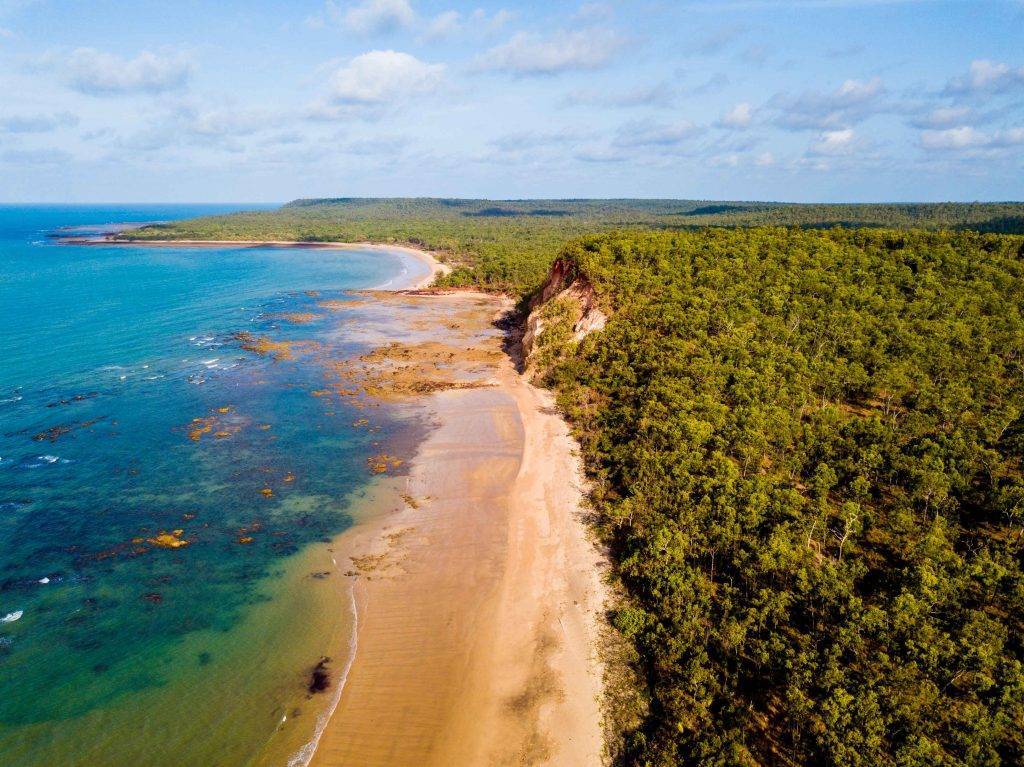
NOTE
The local government requires a permit from the Northern Land Council to travel to Arnhem Land. Although there is a 4WD access to some parts of the Arnhem Land (the road ends in Nhulunbuy, and it takes about 30 hours 4WD drive), all travellers are highly recommended to arrange an organised tour in Darwin instead, for their comfort and safety.
Optionally, you can fly to Arnhem Land – there are daily flights from Darwin and Cairns to Nhulunbuy, but you will need to book accommodation in advance.
There are also various tours that can be booked in Darwin.
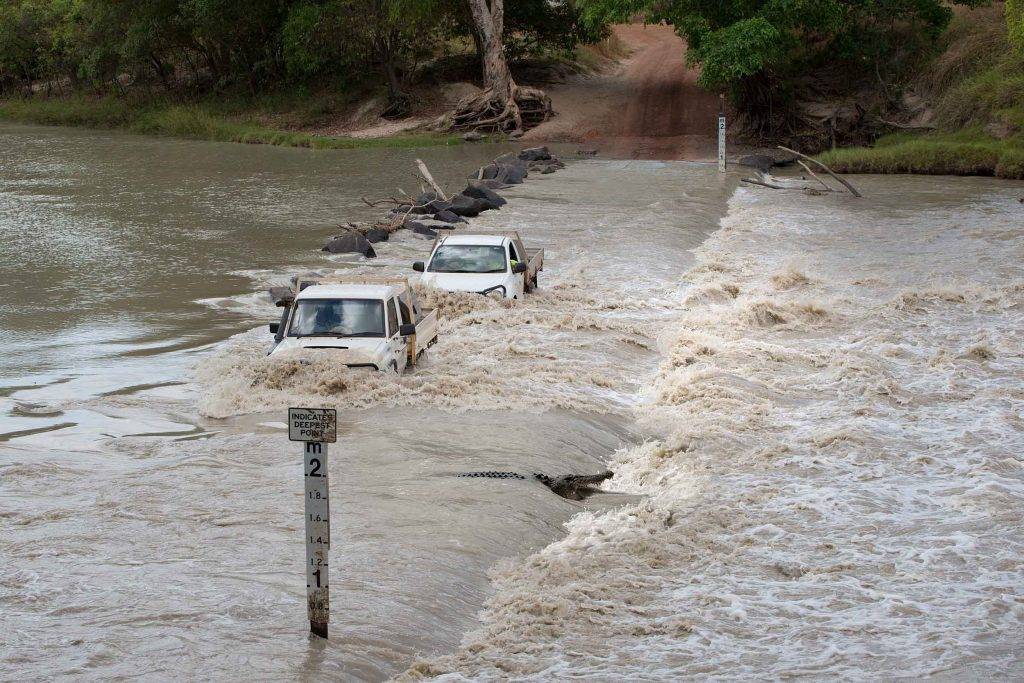
TRAVEL TIP
If you like what you are reading, you might love reading about the Red centre of N.T.
If you don`t have sufficient time to travel to Arnhem Land you can actually get a bit of an insight into the country at Cahill`s Crossing (the entry point to the sacred Aboriginal land). There is a viewing platform which is an excellent spot to watch the fishermen and the cars crossing the river filled with huge saltwater crocodiles.
Also, the earby Ubirr ancient site is a fantastic place to enjoy the 360-degree view of the Arnhem Land from the Sunset Lookout.
Both spots are situated less than 50 km northeast of Jabiru and can be visited free of charge! 😉
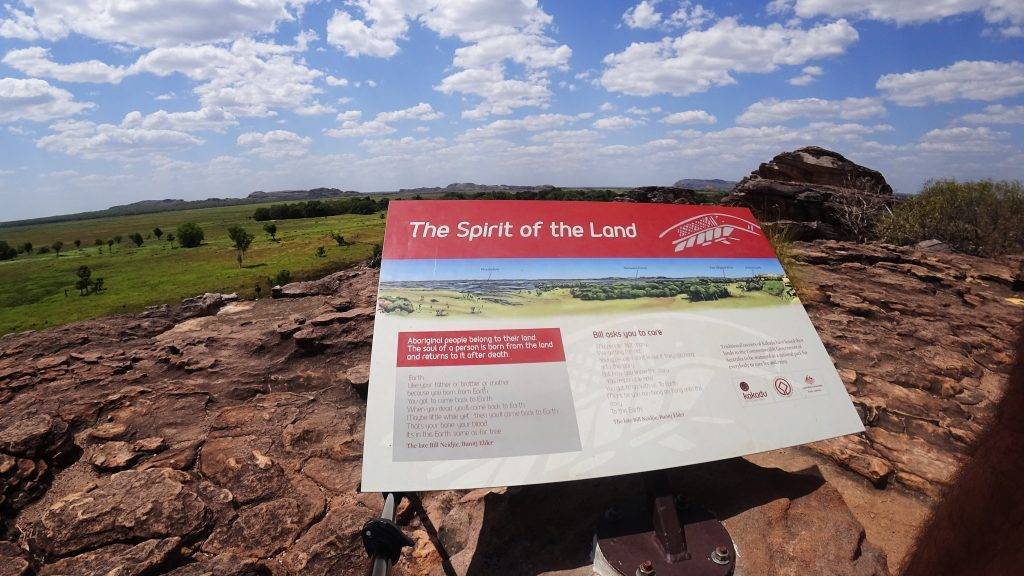
KATHERINE
Katherine is another astonishing natural reserve in the Top End of Australia with Aboriginal heritage. The major point of interest is an extensive canyon system that has been formed by torrential rains, rivers and creeks for millennia.
There are gorgeous waterfalls, rock pools that offer with safe swimming and ancient Aboriginal rock paintings on the sandstone cliffs in the Nitmiluk National Park. The three of Katherine`s Gorges are best to be watched from boat or helicopter.
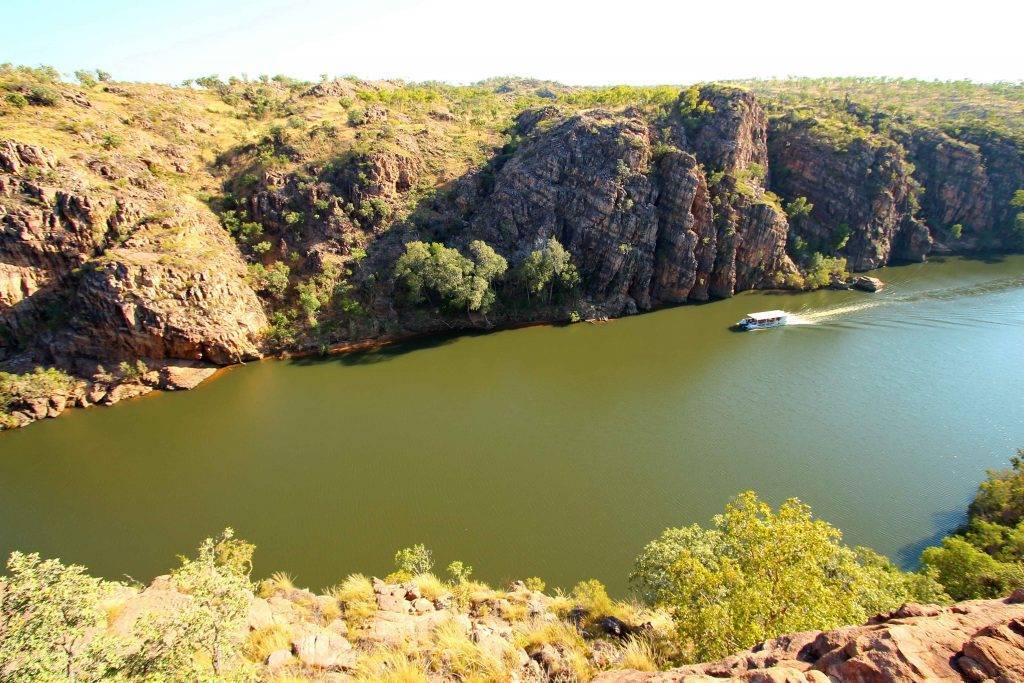
ESSENTIAL EXPERIENCES IN KATHERINE
- Pine Creek – on the way to Katherine stop by at Lake Copperfield for a refreshing swim, after you have explored the Miners Park, Mine Lookout and Watergardens
- Cutta Cutta Caves – discover this impressive limestone nature park and its massive cave system with five different bat species and 170 species of birds while walking through an open tropical woodland
- Edith Falls – idyllic tropical waterfalls with a large plunge pool great for swimming and camping (excellent facilities for a long term stay)
- Nitmiluk National Park – spend a few days in this marvellous reserve and explore its natural beauty on a kayak, boat or foot
- Katherine Gorge cruise/scenic flight – enjoy the series of gorges on the Katherine River (tours can be booked at the Katherine Visitor Centre)
- Mataranka Hot Springs – dip into the tropical natural thermal springs and relax after a long walking day
- Jatbula Trail – take the famous 62 km long off-the-beaten-track, or at least a part of it to search around its monsoon forests, tropical vegetation, but most importantly the ancient Aboriginal rock art creations

NOTE
Katherine is situated 3.5 hr south of Darwin, and it is accessible by 2WD. It has got a good visitor centre where you can get tourist information and arrange a desirable tour/cruise/scenic flight.
CROCODILE WARNING
The entire Top End is home to both saltwater and freshwater crocodiles. When wandering around swamps, wetlands and billabongs always keep to the marked tracks. However, even when walking in the coastal areas watch for the warning signs – saltwater crocs like the beaches.

WHEN TO TRAVEL
The Top End lies in the tropics, and it is subject to the monsoon that brings frequent storms, floods and cyclones, especially from December to March. Therefore, it is recommended to travel during the dry season (Apr-Nov).
However, the wet season (May-Oct) offers ideal conditions for wildlife, and this is exactly the time of a year when all estuaries and wetlands are teeming with life, and crocodiles are particularly active. The level of water rises, which increases the chances of spotting the animals from a much closer distance. Besides, the waterfalls and the whole landscape becomes extraordinary abundant.
HOW TO GET THERE
Fly to Darwin International Airport
For all flights go towww.momondo.com orwww.flyscanner.com
